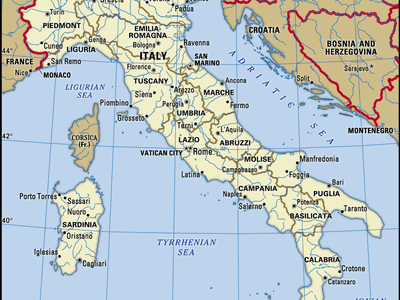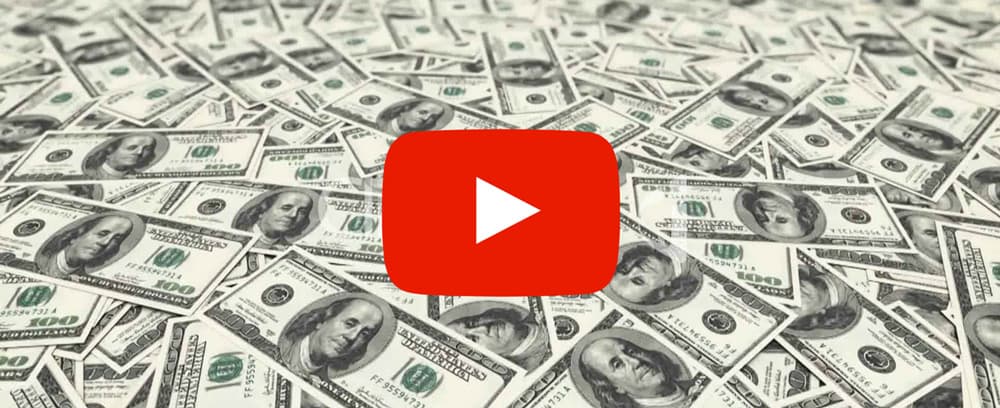
Navigating YouTube Monetization in Italy: A Comprehensive Guide
summary
YouTube Monetization in Italy refers to the process by which content creators in Italy generate revenue from their YouTube channels through various monetization methods, including ad revenue, sponsorships, fan funding, and other tools provided by the platform. Governed by YouTube's global policies and Italy's regulatory framework, monetization on the platform requires creators to meet specific eligibility criteria, such as subscriber counts and watch hours, to qualify for the YouTube Partner Program (YPP). Italian creators must also adhere to local regulations enforced by the Autorit' per le Garanzie nelle Comunicazioni (AGCOM), which oversees digital content and ensures compliance with cybersecurity and online safety standards.[1][2]
YouTube monetization has become a significant aspect of Italy's digital economy, enabling creators to build sustainable careers while promoting Italian culture globally. However, the process is complex, with creators navigating strict content guidelines, unpredictable ad revenue, and evolving platform policies. The COVID-19 pandemic further highlighted YouTube's role in Italy, as creators used the platform to share information, entertainment, and educational content, contributing to its cultural and economic impact.[3][4]
Despite its opportunities, YouTube monetization in Italy faces challenges, including regulatory scrutiny, competition, and the need for creators to diversify their revenue streams. Recent updates to the YPP in 2023, such as expanded access to fan funding tools and ad revenue sharing for Shorts, have provided new avenues for creators to monetize their content. However, ongoing changes to Italy's Digital Services Tax and AGCOM's regulatory efforts continue to shape the monetization landscape, requiring creators to stay informed and adaptable.[5][6][7]
The interplay between YouTube's global policies and Italy's regulatory environment creates a unique ecosystem for Italian creators, balancing creativity with compliance. As the platform evolves, Italian content creators must navigate these complexities to sustain their income and contribute to the growing digital economy.[8][1]
Overview
YouTube monetization has become a critical aspect of content creation, offering creators the opportunity to generate revenue through various strategies, including ad revenue, sponsorships, and other monetization products[4]. In Italy, as in other regions, YouTube's monetization policies are governed by strict guidelines and eligibility thresholds designed to ensure high-quality content and protect advertisers from harmful or non-compliant material[1].
Over the years, YouTube has raised the bar for monetization, implementing stricter requirements to prevent spammers, impersonators, and other bad actors from exploiting the platform[1]. For Italian creators, this means adhering to YouTube's Advertiser-Friendly Content Guidelines and meeting specific eligibility criteria, such as subscriber counts and watch hours, to qualify for the YouTube Partner Program (YPP)[1]. Even within the YPP, not all videos are guaranteed to display ads, as content must undergo review by both automated systems and human reviewers to ensure compliance[1].
The monetization landscape on YouTube is complex, with creators often navigating a maze of rules, regulations, and penalties[9]. While ad revenue remains a primary income source, it is often unpredictable and insufficient on its own, prompting creators to explore additional revenue streams[4][10]. This is particularly relevant in Italy, where content creators must also contend with local regulations, such as those enforced by AGCOM (Autorit' per le Garanzie nelle Comunicazioni), which mandates content filtering and compliance with cybersecurity and online safety standards[2].
The interplay between YouTube's global policies and Italy's regulatory environment creates a unique monetization ecosystem for Italian creators. As the platform continues to evolve, with updates to its monetization policies in 2023 and beyond, creators must stay informed and adaptable to maintain sustainable revenue streams[8][1].
History of YouTube Monetization in Italy
YouTube's monetization journey in Italy has evolved significantly since its introduction, reflecting both the platform's global growth and the unique challenges faced by Italian creators. In the early years, YouTube's monetization policies were relatively straightforward, allowing creators to earn revenue through ad placements on their videos. However, as the platform grew in popularity, so did the need for stricter regulations to ensure quality and compliance with advertiser-friendly content guidelines[1].
By 2010, YouTube faced regulatory scrutiny in Italy, particularly from AGCOM (Autorit' per le Garanzie nelle Comunicazioni), the Italian Communications Authority. AGCOM's attempts to regulate YouTube raised concerns about the future of user-generated content platforms in the country[11]. Despite these challenges, YouTube continued to expand its monetization features, introducing tools like YouTube Premium, Super Chat, Super Stickers, and the merchandise shelf for creators with over 10,000 subscribers[12].
The COVID-19 pandemic further highlighted YouTube's importance in Italy, as the platform became a vital resource for information, entertainment, and education. Italian creators leveraged the platform to share their stories and connect with audiences, contributing to the platform's economic and cultural impact[3]. However, monetization policies became increasingly complex, with YouTube setting higher eligibility thresholds to combat spam and low-quality content[1]. Creators in Italy now face a rigorous process to qualify for the YouTube Partner Program (YPP), which grants access to ads and other monetization tools[9].
Today, YouTube remains a popular platform in Italy, with millions of users visiting the site monthly. Italian creators continue to navigate the platform's monetization landscape, balancing creativity with compliance to sustain their income[12][10]. The history of YouTube monetization in Italy underscores the platform's adaptability and the resilience of its creator community.
Eligibility Criteria for Monetization in Italy
To monetize content on YouTube in Italy, creators must meet specific eligibility criteria set by the YouTube Partner Program (YPP). These requirements ensure that creators adhere to YouTube's quality and compliance standards while providing opportunities to earn revenue from their content[13][14].
YouTube Partner Program Requirements
The YouTube Partner Program (YPP) is the primary pathway for Italian creators to monetize their content.
-
Subscriber Threshold: Creators must have at least 1,000 subscribers on their channel.
-
Watch Hours: Channels must accumulate 4,000 valid public watch hours in the past 12 months or 10 million valid public Shorts views in the last 90 days.
-
Adherence to Policies: Channels must comply with YouTube's Community Guidelines, Monetization Policies, and Terms of Service[15].
-
Two-Step Verification: Creators must enable two-step verification on their Google account.
-
Active AdSense Account: A linked and active Google AdSense account is required to receive payments[15].
Content and Compliance
YouTube's monetization policies in Italy emphasize the importance of creating advertiser-friendly content. Creators must avoid controversial issues, inappropriate language, and content that violates copyright laws[16][15]. Additionally, channels must maintain consistency in content creation and audience engagement to sustain eligibility[17].
Tax Considerations
Income generated through YouTube monetization in Italy is subject to taxation under Italian digital tax policies. Creators must ensure compliance with local tax regulations, including VAT invoicing for digital services[18]. The Italian government has also proposed changes to the Digital Services Tax, which may impact creators generating revenue from digital services in Italy[6].
Challenges and Strategies
Many Italian creators face challenges in meeting the YPP requirements, such as growing their subscriber base and increasing watch hours. Strategies to overcome these challenges include optimizing content, maintaining consistency, engaging with the audience, and utilizing YouTube's tools like Shorts, live streaming, and long-form videos[17][19]. Familiarizing oneself with YouTube's updated policies and guidelines is also crucial to avoid penalties and maintain monetization eligibility[9][16].
Monetization Methods Available in Italy
YouTube offers a variety of monetization methods for content creators in Italy, enabling them to generate revenue from their videos. These methods include ad revenue, fan funding, product placements, sponsorships, and revenue sharing from YouTube Premium and Shorts.
Ad Revenue
Ad revenue is the primary monetization method for most creators. YouTube shares 55% of the ad revenue with creators, while retaining 45% for itself. For example, if an advertiser pays $10 for 1,000 ad impressions, the creator earns $5.50, and YouTube keeps $4.50[20]. The Revenue Per Mille (RPM), which is the actual revenue earned per 1,000 views, varies widely depending on the video content and the country[21]. However, not all videos are eligible for ads. YouTube's Advertiser-Friendly Content Guidelines determine whether a video can display ads, and creators must meet eligibility thresholds to join the YouTube Partner Program (YPP)[1].
Fan Funding
Fan funding features, such as Super Thanks, Super Chat, Super Stickers, and channel memberships, allow creators to earn directly from their audience. These features were expanded in mid-June 2023, giving creators earlier access to fan funding tools as part of the updated YouTube Partner Program[5][22]. Super Thanks, for instance, became available for Shorts in the first half of 2023[23].
Product Placements and Sponsorships
Creators in Italy can also monetize their content through product placements, sponsorships, and endorsements. These methods are accepted under the YPP, provided they comply with YouTube's guidelines[24]. However, creators must ensure that their content aligns with advertising regulations in Italy, which include standards for misleading claims and the protection of vulnerable populations[25].
YouTube Premium Revenue Sharing
In addition to ad revenue, creators earn a share of YouTube Premium revenue. This revenue is generated from subscribers who pay for an ad-free experience on YouTube. The revenue is distributed based on the watch time of Premium subscribers[20].
Monetization for Shorts
YouTube introduced monetization for Shorts in February 2023, allowing creators to earn revenue from this popular format. Shorts creators are eligible for revenue sharing, and ads are displayed within Shorts content[24][23]. This expansion has provided new opportunities for creators to monetize short-form videos.
Eligibility and Compliance
To access these monetization methods, creators must meet the eligibility requirements for the YouTube Partner Program. As of 2023, creators need 1,000 subscribers and 4,000 watch hours or 10 million Shorts views in the last 90 days to qualify[26]. Additionally, creators must adhere to YouTube's policies, including the Advertiser-Friendly Content Guidelines, to ensure their videos remain eligible for monetization[1].
Tax Considerations
Creators in Italy are required to pay taxes on their YouTube earnings at the Italian income tax rate. The exact rate depends on the creator's total income and any applicable deductions[27]. Proper tax compliance is essential for maintaining a sustainable monetization strategy.
Regulatory Framework in Italy
The regulatory framework governing YouTube monetization in Italy is shaped by a combination of national laws, tax policies, and oversight by regulatory bodies. The Autorit' per le Garanzie nelle Comunicazioni (AGCOM), established under Law 249/1997, plays a central role in regulating telecommunications, media, and digital services, including platforms like YouTube[28][29]. AGCOM has been actively adapting its regulatory approach to address the challenges posed by digital platforms, ensuring compliance with Italian laws while maintaining a fair competitive landscape[7][30].
The Role of AGCOM in Digital Regulation
AGCOM has been appointed as Italy's Digital Services Coordinator, making it a key player in the enforcement of digital service regulations, including those affecting YouTube[31]. The authority has introduced guidelines to ensure transparency and fairness in the online business of influencers, which directly impacts content creators on platforms like YouTube[30]. Additionally, AGCOM has mandated Italian Internet Service Providers (ISPs) to implement content filtering, which affects the accessibility and safety of online content, including YouTube videos[2]. Recent rulings by the TAR for Lazio have reaffirmed AGCOM's authority in regulating provider liability, particularly concerning platforms like YouTube and X (formerly Twitter)[32].
Taxation and Revenue Sharing
YouTube creators in Italy are subject to Italian income tax on their earnings, with rates varying based on total income[27]. YouTube retains 45% of ad revenue, while creators receive the remaining 55%[20]. In addition to ad revenue, creators also earn a share of YouTube Premium revenue, which is similarly subject to taxation[20]. The Italian government has introduced a Digital Services Tax (DST) as part of the 2019 and 2020 Budget Laws, which applies to revenues generated from digital services, including YouTube monetization[33]. The DST is expected to undergo changes, with proposed amendments removing revenue thresholds, making all digital service revenues subject to taxation starting January 1, 2025[6].
VAT and Compliance
Value-added tax (VAT) in Italy applies to the supply of digital goods and services, including YouTube earnings. The standard VAT rate is 22%, with reduced rates of 4% applicable to certain digital publications and medical supplies[34][35]. Creators must issue VAT invoices for their earnings, which serve as official tax receipts in compliance with EU regulations[18]. These tax obligations are part of a broader effort to ensure that digital platforms and their users comply with Italian tax laws, contributing to the country's digital economy[18][34].
Challenges and Future Directions
The regulation of digital platforms like YouTube in Italy presents ongoing challenges, particularly in balancing freedom of expression with public protection and market fairness[30]. AGCOM's efforts to regulate YouTube and other digital services highlight the complexities of adapting traditional regulatory frameworks to the rapidly evolving digital landscape[11]. As Italy continues to refine its digital tax policies and regulatory guidelines, content creators and platforms must remain vigilant to ensure compliance with evolving legal requirements[7][6].
Challenges Faced by Italian Content Creators
Italian content creators on YouTube face a range of challenges as they navigate the competitive and ever-evolving digital landscape. These challenges include adapting to algorithm changes, building sustainable revenue streams, and standing out in a crowded market.
Algorithm Adaptation and Content Optimization
One of the most significant challenges for Italian creators is keeping up with YouTube's constantly changing algorithm. The platform's algorithm heavily influences content discovery, recommendations, and watch time, which are critical for channel growth[36][37]. Creators must focus on optimizing their content for watch time, click-through rates (CTR), and audience engagement to remain competitive[36][17]. Strategies such as creating playlists, utilizing end screens, and maintaining content consistency are essential to adapt to these changes[17][38]. However, staying ahead of algorithmic updates requires continuous learning and adaptation, which can be resource-intensive for emerging creators[37][39].
Monetization and Revenue Streams
While YouTube offers multiple revenue streams, such as ad revenue, YouTube Premium, and Shorts monetization, Italian creators often struggle to build sustainable income[40][24]. Ad revenue, while accessible, can be unpredictable and insufficient on its own, pushing creators to explore additional monetization strategies like sponsorships, product placements, and YouTube Shopping[41][4]. However, achieving eligibility for the YouTube Partner Program (YPP) and maintaining consistent earnings remain significant hurdles, particularly for smaller channels[41][42].
Competition and Audience Engagement
The growing competition in the Creator Economy makes it increasingly difficult for Italian creators to stand out and build a loyal audience[43][42]. With millions of creators vying for attention, emerging YouTubers must invest time and resources into creating high-quality, engaging content that resonates with their target audience[36][42]. Additionally, fostering audience engagement through comments, shares, and community building is crucial but challenging, especially for creators with limited resources[43][44].
Regional Differences and Cultural Nuances
Italy's diverse regional identities and cultural preferences also present unique challenges for content creators. For instance, while Southern Italy shows a strong interest in live streams and branded content, the North-East region exhibits less attachment to YouTube, making it harder for creators to reach audiences in certain areas[45][46]. Understanding these regional nuances and tailoring content accordingly is essential but can be complex and time-consuming[47].
Regulatory and Licensing Requirements
Italian creators must also navigate regulatory challenges, particularly in complying with licensing requirements set by bodies like the Autorit' per le Garanzie nelle Comunicazioni (AGCOM). These regulations aim to ensure fair competition and compliance with digital media laws, but they can add layers of complexity for creators trying to monetize their content[7].
Impact of YouTube Monetization on the Digital Economy of Italy
YouTube monetization has significantly influenced Italy's digital economy, providing opportunities for content creators to build sustainable careers while contributing to the country's cultural and economic landscape. As one of the top monetization countries for YouTube content, Italy has seen a surge in creators leveraging the platform to generate income through ad revenue, YouTube Premium, Super Chat, and merchandise sales[48][12].
Economic Contributions
YouTube has become a vital platform for Italian creators, enabling them to reach global audiences and monetize their content effectively. The platform's ad revenue model, which includes CPM (Cost Per Mille) and RPM (Revenue Per Mille), plays a central role in creators' earnings. In Italy, the average CPM rates vary depending on the content category and audience engagement, with creators earning approximately '0.75 per 1,000 views[48][21]. This revenue stream has allowed many Italian creators to turn content creation into a full-time profession, fostering economic growth within the digital sector[4][3].
Cultural Impact
Beyond financial benefits, YouTube has served as a platform for promoting Italian culture globally. Italian creators have used the platform to showcase local traditions, cuisine, and art, contributing to cultural diversity and international awareness[3]. The platform's ability to amplify individual perspectives has also empowered creators to experiment with innovative content formats, further enriching Italy's digital cultural landscape[49].
Challenges and Opportunities
Despite its benefits, YouTube monetization in Italy faces challenges, including regulatory scrutiny and competition. The Italian Communications Authority (AGCOM) has attempted to regulate the platform, which could impact user-generated content and monetization strategies[11]. Additionally, creators must navigate the unpredictability of ad revenue and explore alternative monetization avenues, such as merchandise and sponsorships, to ensure long-term sustainability[4][50].
YouTube's role in Italy's digital economy extends beyond individual creators, supporting businesses and fostering skill development. The platform has also proven valuable during crises, such as the COVID-19 pandemic, by providing a space for information sharing and community engagement[3]. As Italy continues to embrace digital transformation, YouTube remains a key driver of economic and cultural innovation, offering both challenges and opportunities for creators and businesses alike[51][3].
Success Stories and Case Studies
YouTube has become a platform where Italian content creators can turn their passion into a sustainable career, with many achieving remarkable success. These creators not only generate income but also contribute to cultural diversity and skill-building within Italy's digital economy[51][3].
Personal Stories of Italian Creators
The platform has highlighted several Italian creators who have built thriving careers through YouTube. These case studies showcase how creators have leveraged the platform's monetization tools, such as ad revenue, Super Chat, Super Stickers, and merchandise shelves, to generate income[12][52]. For instance, creators with over 10,000 subscribers have successfully used the merchandise shelf feature to sell branded products directly to their audience, creating an additional revenue stream[12].
Impact During the COVID-19 Pandemic
YouTube proved to be a vital resource for Italian creators during the COVID-19 pandemic. Many turned to the platform to share knowledge, entertain, and connect with audiences during a time of isolation. This period saw a surge in content related to personal finance, eco-farming, and sustainable living, with 96% of Gen Z viewers reporting real-life benefits from engaging with such content[44]. Creators in these niches not only grew their channels but also fostered a sense of community and belonging among their viewers[44].
Challenges and Overcoming Barriers
While success stories abound, Italian creators also face challenges such as navigating YouTube's complex monetization policies and standing out in a highly competitive digital landscape[9][42]. However, many have overcome these obstacles by diversifying their revenue streams, focusing on high-quality content, and engaging deeply with their audiences[52][10].
These success stories underscore the potential of YouTube as a platform for career growth and cultural impact in Italy, offering inspiration to emerging creators aiming to build sustainable careers on the platform[51][3][44].
Future Trends and Developments
The landscape of YouTube monetization in Italy is poised for significant changes in the coming years, driven by both platform updates and evolving regulatory frameworks. In 2023, YouTube expanded its YouTube Partner Program (YPP), offering earlier access to fan funding and Shopping features for eligible creators in Italy and other regions[5][22]. This expansion includes tools like Super Thanks, Super Chat, and channel memberships, which are expected to play a larger role in creators' revenue streams[5]. Additionally, YouTube introduced ad revenue sharing for Shorts, allowing creators to monetize short-form content more effectively[23][24].
Regulatory developments in Italy are also shaping the future of digital content monetization. The Italian Communications Authority (AGCOM) has been actively working to adapt licensing requirements to align with technological advancements and ensure compliance with national and EU laws[7][28]. In November 2023, AGCOM adopted regulations aimed at protecting minors and consumers from harmful content on digital platforms, which could influence how creators produce and monetize their content[53]. Furthermore, the Italian government is considering changes to the Digital Services Tax (DST), potentially removing revenue thresholds and introducing new reporting obligations effective from January 2025[6][33]. These changes may impact creators who generate income from digital services, including YouTube monetization.
Looking ahead, YouTube's algorithm updates in 2024 are expected to bring significant changes to content discovery and recommendation, which could affect how creators optimize their videos for monetization[37]. The platform's modular approach to the YPP terms, introduced in 2023, allows for the addition of new monetization opportunities without overhauling the entire agreement, signaling a more flexible and adaptive framework for creators[54].
As the digital landscape evolves, Italian content creators will need to stay informed about both platform policies and regulatory changes to maximize their revenue potential while ensuring compliance with local laws. The interplay between YouTube's monetization strategies and Italy's regulatory environment will likely continue to shape the future of content creation and monetization in the country.
Citations and Sources
The guidelines for influencers in Italy, as outlined by the Italian Communications Authority ("AGCOM"), were established following a public consultation launched on July 21, 2023, and were officially published on January 16, 2024. These guidelines specifically address the regulatory framework for influencers under the Audiovisual Media Services Code, emphasizing their control over the creation, production, and organization of published content[55][30]. This development highlights the growing recognition of content creation as a profession, with monetization strategies becoming central to its sustainability and growth. Content creators are increasingly exploring diverse revenue streams beyond traditional ad revenue, which is often unpredictable and insufficient on its own[4].


